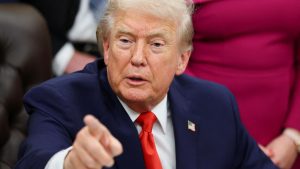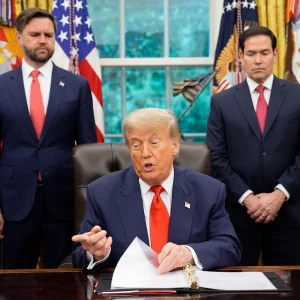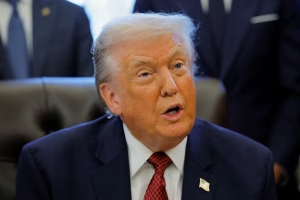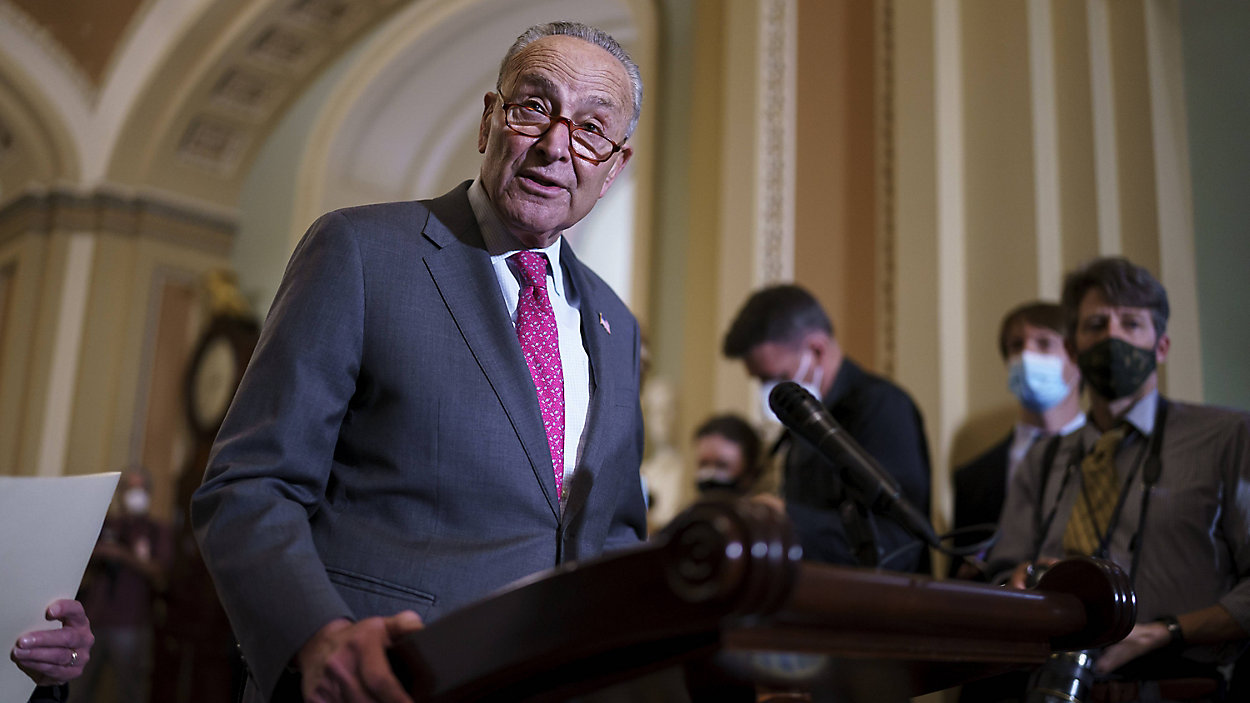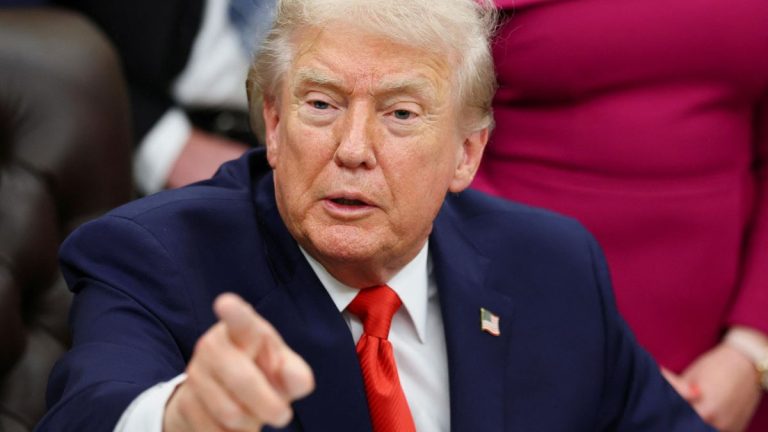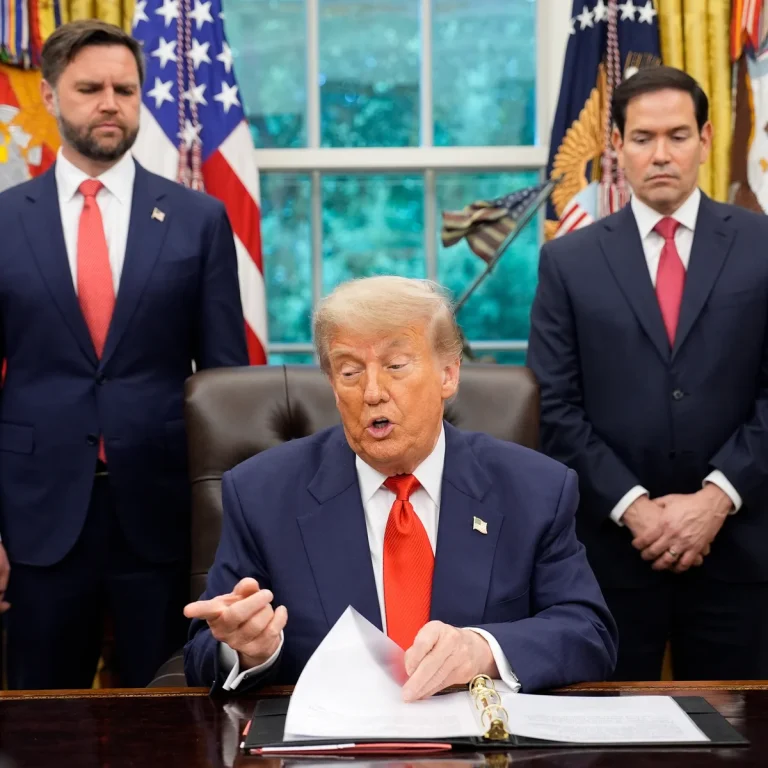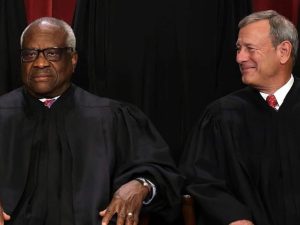‘Different the Second Time’: CNN Data Analyst Notes Trump’s Stability Amid Shutdown
A new segment on CNN this week turned heads — not for political fireworks, but for a data-driven revelation that few in Washington expected. CNN chief data analyst Harry Enten told host John Berman that recent polling suggests the ongoing government shutdown is having little to no negative impact on President Donald Trump’s approval ratings.
Enten, known for his quantitative approach and neutral tone, referenced fresh results from an AP-NORC survey showing that Trump’s standing with voters has remained stable — and in some measures, even improved — as the budget stalemate stretches into another week.
“It turns out shutdowns are different the second time around when it comes to Donald Trump,” Enten said during Monday’s broadcast. “You look at the numbers — his approval just isn’t dipping the way it did in 2018 and 2019.”
Comparing the Two Shutdowns
To illustrate the contrast, Enten displayed historical data from the earlier shutdown that began in late 2018 and extended into early 2019. At that time, Trump’s approval rating fell quickly, dropping three points within the first 20 days.
“The shutdown was eating into his popular support,” Enten noted. “It was very much on the decline.”
But when shifting to the current data, the pattern was completely different. “This shutdown hasn’t eaten into Donald Trump’s support at all,” Enten said. “His net approval rating is actually up one point.”
The conclusion, he said, is simple: “The first shutdown during Trump’s first term was hurting him. This one is not hurting him at all.”
https://clipscache1.grabien.com/c/streams/3191/W0-Q0hrZRweSh2Yz3SG_WA/1761104283/3191346.mp4
The Question of Blame
At that point, Berman pressed Enten on what many see as the defining factor in any government shutdown: who the public blames.
“Yeah, OK — what about the question of blame?” Enten replied, flipping to another chart.
The data told a striking story. During the 2018–2019 shutdown, more than 61 percent of Americans blamed Trump “a great deal” for the impasse. In 2025, that figure has dropped by 13 points, to just 48 percent.
“It’s a different world,” Enten said. “Back then, more than three in five Americans said Trump was largely to blame. Now, it’s less than half.”
According to Enten, that difference explains much of the stability in Trump’s polling. “There’s no real reason Donald Trump might say, at least when it comes to popular support, ‘I want to get out of this shutdown.’ He’s getting less of the blame.”
Shifting Strategy and Governing Style
Berman then asked what Trump might be doing differently this time around.
“Yes, exactly right,” Enten said. “We talk about Donald Trump as someone who wants to be a consequential, influential president. The legislative process may be frozen on Capitol Hill, but that’s not how he’s governing right now.”
According to Enten, Trump has leaned heavily on executive actions to maintain his policy momentum even as Congress remains gridlocked.
“He’s using his pen,” Enten said, referring to the surge in executive orders. “At this point in his 2017 presidency, he had signed about 50 executive orders. Now, that number is already at 210.”
Enten added that the pace is historically significant. “You have to go back to Franklin Delano Roosevelt to find a president who signed more executive orders in a single year than Donald Trump has already signed this time around.”
“And remember,” he added, “we still have two months left in the year. It wouldn’t be surprising if he signs even more.”
Political Implications and Broader Trends
The CNN segment stood out for its tone — not overtly partisan, but grounded in data that complicates conventional wisdom about government shutdowns and presidential accountability.
Historically, prolonged shutdowns have hurt incumbents as voters grow frustrated with dysfunction in Washington. Yet the current data appears to show a more divided, less reactionary electorate.
Analysts point to several factors: a more polarized media landscape, Trump’s consolidated support among Republican voters, and a perception among some Americans that political stalemates have become a recurring feature of modern governance rather than an extraordinary crisis.
Enten’s conclusion underscored the evolving political climate. “Shutdowns are still unpopular,” he said. “But how much they hurt a sitting president now depends on how much of the blame voters think is really his.”
A Calm Reaction to Unfavorable Data
Berman, who often moderates spirited discussions about polling and policy, seemed momentarily surprised by the numbers. “So you’re saying it’s not hurting him at all?” he asked.
“That’s exactly right,” Enten replied, reiterating the point. “There’s been no major dip in his popularity. If anything, the data suggests he’s weathering it more effectively.”
The exchange highlighted a subtle shift within political coverage: even mainstream networks acknowledging that the public’s reaction to Trump has grown less volatile, and that patterns from his first term may no longer apply.
The Broader Context
Political observers note that Trump’s reliance on executive orders reflects a broader strategic approach. Facing a divided Congress and ongoing procedural gridlock, the White House has leaned on unilateral policy mechanisms to maintain forward motion on key issues ranging from border enforcement to domestic energy policy.
That approach, while controversial, has insulated the administration from some of the legislative stalemates that typically damage presidents during shutdowns. It also helps explain why Trump’s approval numbers have held steady even as federal agencies scale back operations and furloughs continue.
At the same time, Enten’s analysis underscores the durability of Trump’s political base — and the growing perception among his supporters that Washington gridlock is an unavoidable byproduct of partisan division rather than a reflection of his leadership.
As Enten put it: “Shutdowns may frustrate voters, but the data shows this one just isn’t changing opinions the way it used to.”
Looking Ahead
With negotiations on Capitol Hill stalled and the shutdown now stretching into its third week, analysts say the political dynamics remain fluid.
For now, though, Trump’s approval stability appears to be an unexpected constant — a development that, as Enten observed, could influence how both parties approach future budget showdowns.
As the CNN segment wrapped, Berman nodded and summarized the takeaway: “So, in short — this isn’t 2019 anymore.”
Enten agreed. “Exactly. It’s a different world.”

James Jenkins is a celebrated Pulitzer Prize-winning author whose work has reshaped the way readers think about social justice and human rights in America. Raised in Atlanta, Georgia, James grew up in a community that instilled in him both resilience and a strong sense of responsibility toward others. After studying political science and creative writing at Howard University, he worked as a journalist covering civil rights issues before dedicating himself fully to fiction. His novels are known for their sharp, empathetic portraits of marginalized communities and for weaving personal stories with broader political realities. Jenkins’s breakout novel, Shadows of Freedom, won national acclaim for its unflinching look at systemic inequality, while his more recent works explore themes of identity, resilience, and the fight for dignity in the face of oppression. Beyond his novels, James is an active public speaker, lecturing at universities and participating in nonprofit initiatives that support literacy and community empowerment. He believes that storytelling is a way to preserve history and inspire change. When not writing, James enjoys jazz music, mentoring young writers, and traveling with his family to explore cultures and stories around the world.

